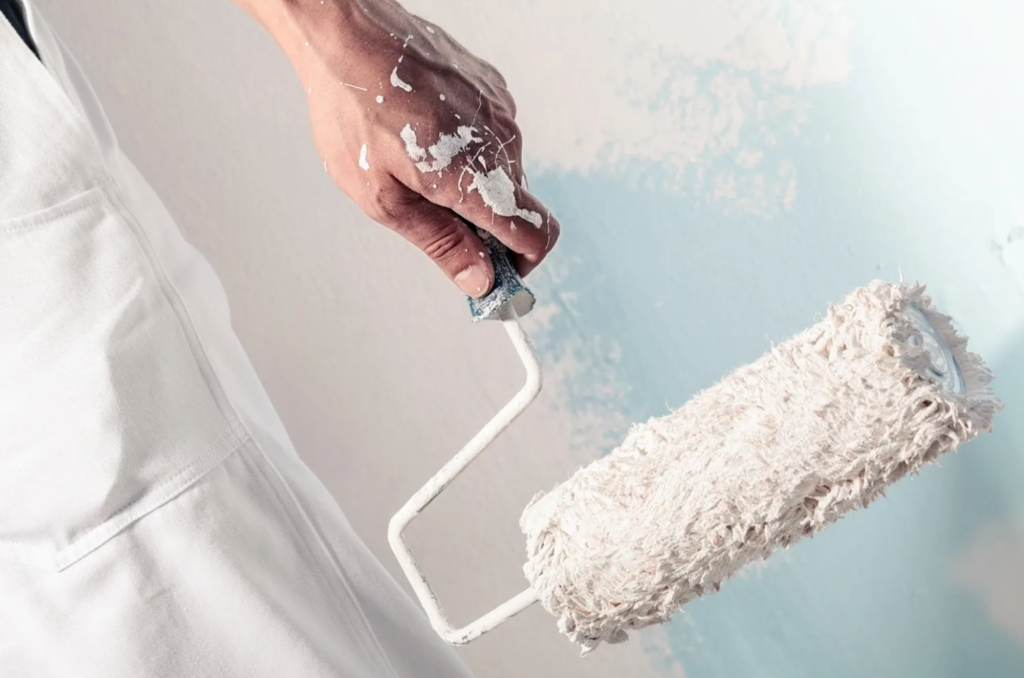Before diving into a painting project, it is important to consider primers and the substrates to which they will be applied. Learn why using the right primer before applying color ensures a longer-lasting finish.
In previous installments of CP Monthly, we’ve covered tips for preparing both interior spaces and exterior spaces for painting. One common denominator between those steps included the importance of priming surfaces prior to starting application.
When working with a paint job, using a prime coat is crucial to ensure the project is completed in an effective, long-lasting way. One of the biggest benefits of primer allows better adhesion to the surface, along with offering additional protection for the paint, especially on surfaces that may be challenging to cover. For example, a porous surface like concrete could require primer to guarantee the paint will be properly applied.

Along with creating more effective adhesion between paint and the surface, primer can also hide some surface defects. This technique is especially useful on older surface, which would likely have blemishes like water stains. If the primer is applied prior to painting, the result will be a more even application with fewer stains or defects.
Primer can ultimately be a cost-saver as well, since it creates a surface that is more ideal for paint adhesion. As a result, primer decreases the risk of color bleeding from the paint, peeling or soaking unevenly into surfaces. Benjamin Moore notes that skipping primer may result in uneven or blotchy paint.
The painted surface may not even require a finishing coat if the primer is applied well, reducing the amount of paint and clean-up needed for the overall project.
For painted surfaces that are exposed to the elements, primer can protect both the paint and surface itself. By acting as a seal for surfaces and paint that are not water resistant, the primer can prevent damage, including mold.
Wooster Brush also adds that it’s important to use the proper primer on the entire surface if it is newly constructed, stained by water or smoke, prone to mildew, rusted, or aged.
While primer is essential for paint jobs, selecting the right type can be just as important. Oil-based primers, for example, are ideal for surfaces that people often touch: doors, windows and cabinets. As a heavy-duty option, these primers can be used on highly porous surfaces or areas with visible stains and should be paired with oil-based paints. However, oil-based primers do emit volatile organic compounds, so personal protective equipment should be used.
Although they are not as heavy-duty as oil-based primers, water-based primers emit a lower number of volatile organic compounds and are more easily cleaned. In addition to the lower amount of fumes, these primers dry quickly, making them ideal for indoor painting. Water-based primers are best used with water-based paint.
To limit the number of paint and primer coats required, there is a combined paint and primer solution. While this solution will not cover stains or defects as well as oil- or water-based primers, the formula does work well on new drywall. Combined paint and primer should be used for projects that deal with new, unblemished surfaces.
It is also important to consider the type of substrate the primer will be applied to. The porous nature of bare wood reportedly makes the use of primer a necessity, as well as remembering that wood grain could create an uneven color without it.
Oxidation could affect metal surfaces that are exposed to moisture. Metal primers can contain anti-corrosion agents, such as zinc, to combat this. Primers also help reduce the layers of paint necessary to completely cover previous colors on surfaces such as plastic.



